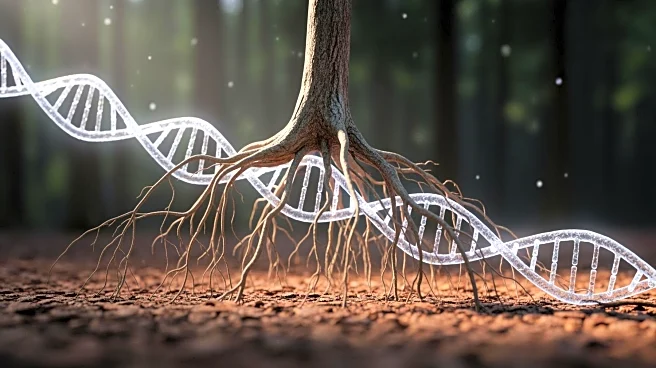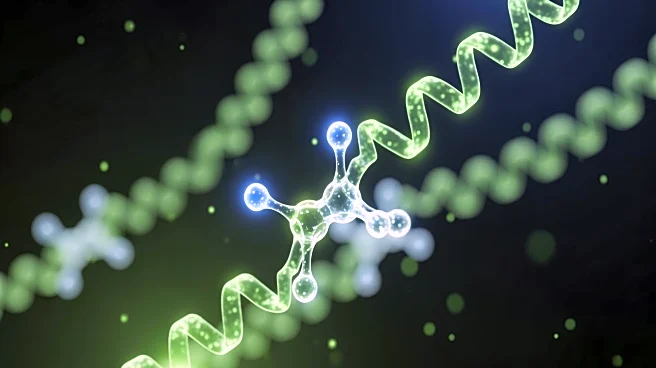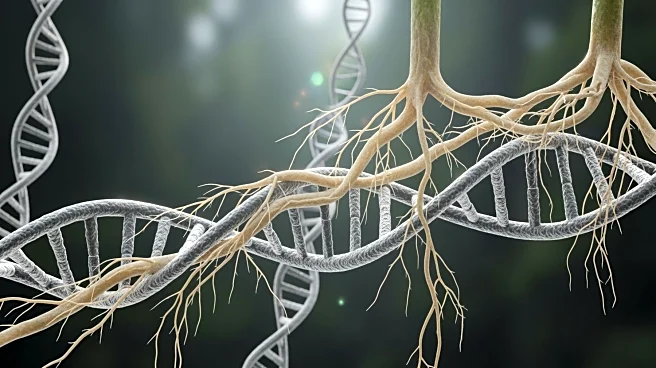What's Happening?
A recent study has delved into the genetic and environmental factors contributing to endometriosis, a condition affecting many individuals assigned female at birth. The research utilized genome-wide association studies (GWAS) and the GE 100,000 genome database
to identify genetic variants that may predispose individuals to endometriosis. The study highlighted five genes with potential targets in the endometriosis pathway, including IDO1, CNR1, KISS1R, and IL-6. These genes were found to have variants that could influence the development of endometriosis through altered expression levels. Additionally, the study examined the impact of environmental pollutants, such as endocrine-disrupting chemicals (EDCs), which can mimic hormones and interfere with physiological processes. The findings suggest a complex interaction between ancient genetic variants, modern environmental pollutants, and epigenetic regulation, potentially shaping population-specific risks for endometriosis.
Why It's Important?
Understanding the genetic and environmental factors contributing to endometriosis is crucial for improving diagnosis and treatment strategies. The study's findings highlight the role of ancient genetic variants inherited from Neandertals and Denisovans, which may interact with modern industrial pollutants to exacerbate disease susceptibility. This gene-environment interaction could lead to chronic inflammation and pain perception, particularly in populations with specific genetic predispositions. By identifying these factors, researchers can develop more targeted approaches to managing endometriosis, potentially leading to personalized treatment options. Furthermore, the study underscores the importance of considering environmental exposures in the context of genetic predispositions, which could inform public health policies aimed at reducing exposure to harmful pollutants.
What's Next?
Future research should focus on expanding the study cohort to include a larger and more diverse population to improve the statistical power of genetic associations. Family-based studies incorporating cascade genetic testing could help clarify inheritance patterns and the potential contribution of additional rare variants to endometriosis risk. Functional validation through in vitro and vivo models is necessary to confirm the biological relevance of the identified regulatory variants. Integrating environmental exposure data with genomic analysis would provide a more comprehensive understanding of how genetic and environmental factors interact in the development and progression of endometriosis. These efforts could lead to the development of early diagnosis and personalized treatment strategies, ultimately improving the quality of life for individuals affected by endometriosis.
Beyond the Headlines
The study's exploration of the intersection between ancient genetic variants and modern environmental pollutants offers a novel perspective on endometriosis susceptibility. It suggests that evolutionary pressures involving immune regulation and inflammatory responses, when combined with modern environmental exposures, may amplify disease susceptibility. This perspective challenges traditional views of endometriosis as solely a genetic or environmental condition, highlighting the need for interdisciplinary approaches to understanding complex diseases. Additionally, the study raises ethical considerations regarding the impact of industrial pollutants on public health, emphasizing the need for regulatory measures to limit exposure to harmful chemicals.













